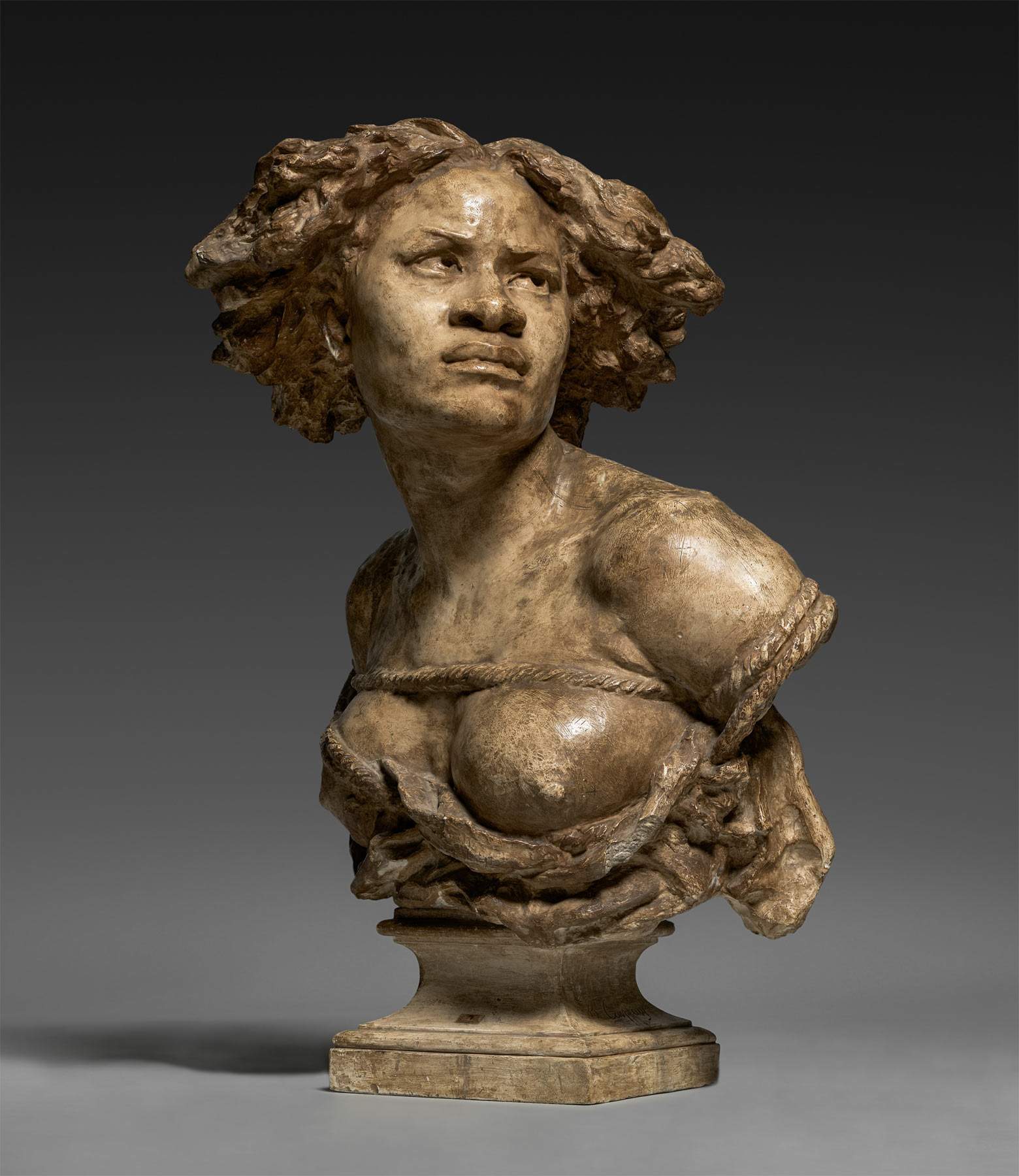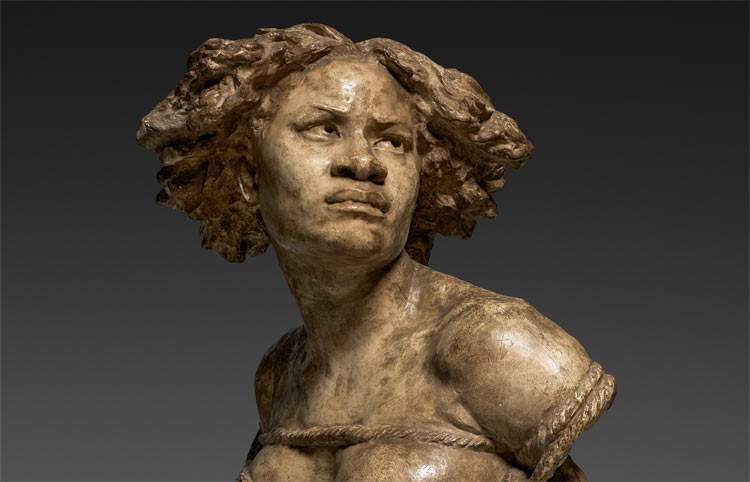Fighting racial prejudice with the art of the past: this is one of the reasons that led the Cleveland Museum of Art to acquire an important work by Jean-Baptiste Carpeaux (Valenciennes, 1827 - Courbevoie, 1875), one of France’s leading mid-nineteenth-century sculptors. It is Pourquoi naître esclave? (“Why be born a slave?”), a bust of an African woman, bound, looking upward defiantly.
For the Cleveland Museum, it is one of the most iconic works by Carpeaux, who made it in 1868. Executed in plaster (several replicas of the work are known to be preserved in various museums, especially in France), and then colored, it would be the main model from which the various draftings were then produced: suggesting this idea is the fact that the surface of the sculpture, covered with complex, shaded hatching and subtle modeling, has many scratches and marks, reasoning that it may have been used as a prototype for a long time.

The woman featured in the work is presented with an expression and movement that make the figure particularly palpable. Although slavery had been abolished in France in 1848, it remained a controversial issue during Carpeaux’s lifetime, as France was expanding its colonies in North Africa, where the practice of enslaving local populations continued, despite the ban at home. Moreover, a few years earlier the American Civil War was being fought in America, which had provided new insights for abolitionist artists. The vigor of the figure’s contorted form and the intensity of his gaze underscore the gravity of the subject and the intensity of abolitionist sentiment at the time.
According to the museum, Carpeaux’s work "will have an enormous impact on the Cleveland Museum of Art’s collection because of its powerful aesthetic qualities, its formidable position on one of the most pressing social and political issues of the 19th century, and the relevance of its subject today. Pourquoi naître esclave? will allow the Cleveland Museum of Art to host complex discussions through artworks that recall painful histories and challenge conventional historical narratives. When the sculpture goes on display this spring, it will feature an interpretive framework that considers its subject, what it represented when the bust was created, and its relevance today. By highlighting her place in a global lineage of colonial images of black women, as well as in contemporary studies and museum practice that seeks to name or otherwise identify subjects like her, the model’s status both as a living person and as an allegorical figure will allow viewers to come to terms with the power imbalances that also existed in the creation of abolitionist art."
 |
| Cleveland Museum of Art acquires a bust of Carpeaux against slavery |
Warning: the translation into English of the original Italian article was created using automatic tools. We undertake to review all articles, but we do not guarantee the total absence of inaccuracies in the translation due to the program. You can find the original by clicking on the ITA button. If you find any mistake,please contact us.